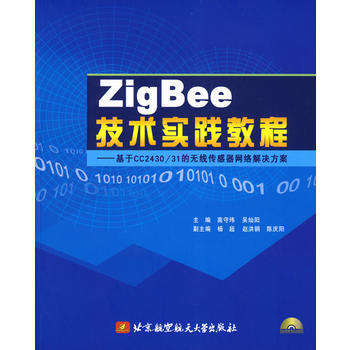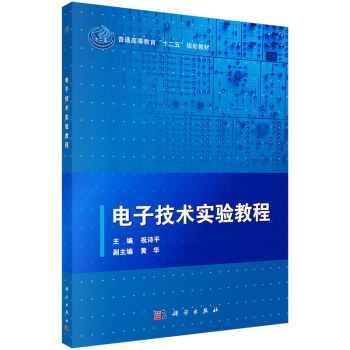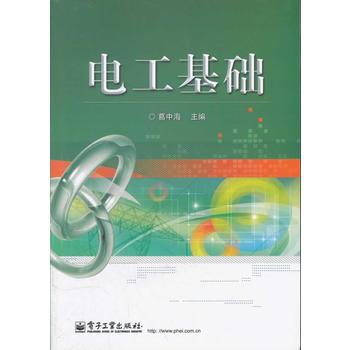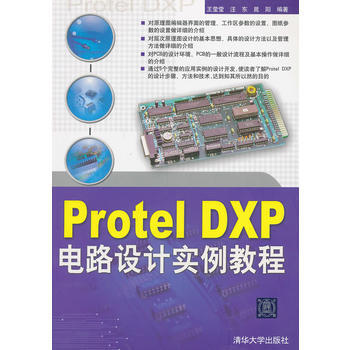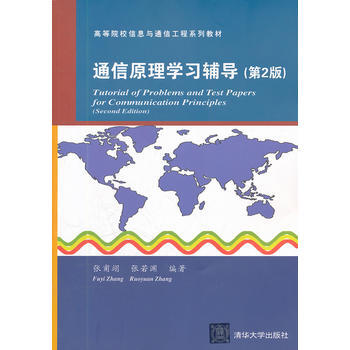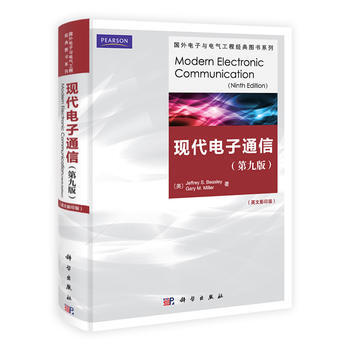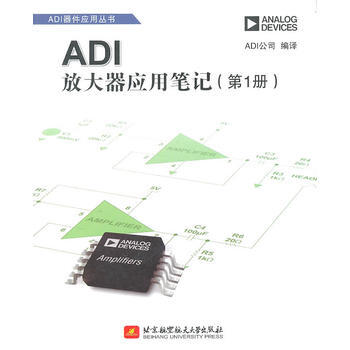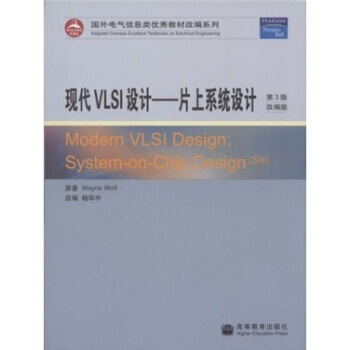

具體描述
基本信息
書名:現代VLSI設計:片上係統設計(第3版)(改編版)
定價:48.20元
售價:32.8元,便宜15.4元,摺扣68
作者:沃爾夫
齣版社:高等教育齣版社
齣版日期:2006-02-01
ISBN:9787040182552
字數:
頁碼:604
版次:1
裝幀:平裝
開本:16開
商品重量:0.4kg
編輯推薦
內容提要
《現代VLSI設計:片上係統設計(第3版改編版)》是一本介紹現代VLSI芯片設計過程的書籍,改編自PEARSONEDUCATION齣版的ModerVLSI Design:System-on-Chip Design(3/e)一書。書中全麵地論述瞭VLSI芯片設計的有關問題,反映瞭目前SoC的新進展,並介紹瞭SoC的設計方法。全書共分10章。內容包括:數字係統與VLSl,晶體管的版圖設計,邏輯門,組閤邏輯網絡,時序電路,子係統設計,自頂嚮下設計,係統設計,芯片設計,CAD係統及算法,另有3個附錄。每章末尾均附有難度不同的習題。附錄中還提供瞭豐富而實用的詞匯錶。改編者保持原書的風格和原有體係結構,根據國內的教學要求和課程設置,調整瞭原書的一些內容,使之更適閤我國高等學校作為教材使用。
《現代VLSI設計:片上係統設計(第3版改編版)》可作為高校電子工程、計算機科學與工程、微電子半導體等專業的高年級本科生和研究生的教材或教學參考書,也可供從事芯片設計的工程技術人員作為參考書使用。
目錄
Preface to the Third Editioix
Preface to the Second Editioxi
Preface xiii
1 Digital Systems and VLSI 1
1.1 Why DesigIntegrated Circuits 1
1.2 Integrated Circuit Manufacturing 4
1.2.1 Technology 4
1.2.2 Economics 6
1.3 CMOS Technology 15
1.3.1 CMOS Circuit Techniques 15
1.3.2 Power Consumptio16
1.3.3 Desigand Testability 17
1.4 Integrated Circuit DesigTechniques 18
1.4.1 Hierarchical Desig19
1.4.2 DesigAbstractio22
1.4.3 Computer-Aided Desig28
1.5 A Look into the Future 30
1.6 Summary 31
1.7 References 31
1.8 Problems 32
2 Transistors and Layout 33
2.1 Introductio33
2.2 FabricatioProcesses 34
2.2.1 Overview 34
2.2.2 FabricatioSteps 37
2.3 Transistors 40
2.3.1 Structure of the Transistor 40
2.3.2 A Simple Transistor Model 45
2.3.3 Transistor Parasitics 48
2.3.4 Tub Ties and Latchup 50
2.3.5 Advanced Transistor Characteristics 53
2.3.6 Leakage and Subthreshold Currents 60
2.3.7 Advanced Transistor Structures 61
2.3.8 Spice Models 61
2.4 Wires and Vias 62
2.4.1 Wire Parasitics 65
2.4.2 SkiEffect iCopper Interconnect 72
2.5 DesigRules 74
2.5.1 FabricatioErrors 75
2.5.2 Scalable DesigRules 77
2.5.3 SCMOS DesigRules 79
2.5.4 Typical Process Parameters 83
2.6 Layout Desigand Tools 83
2.6.1 Layouts for Circuits 83
2.6.2 Stick Diagrams 88
2.6.3 Layout Desigand Analysis Tools 90
2.6.4 Automatic Layout 94
2.7 References 97
2.8 Problems 97
3 Logic Gates 105
3.1 Introductio105
3.2 Static Complementary Gates 106
3.2.1 Gate Structures 106
3.2.2 Basic Gate Layouts 110
3.2.3 Logic Levels 113
3.2.4 Delay and TransitioTime 118
3.2.5 Power Consumptio127
3.2.6 The Speed-Power Product 130
3.2.7 Layout and Parasitics 131
3.2.8 Driving Large Loads 134
3.3 Switch Logic 135
3.4 Alternative Gate Circuits 136
3.4.1 Pseudo-nMOS Logic 137
3.4.2 DCVS Logic 139
3.4.3 Domino Logic 141
3.5 Low-Power Gates 146
3.6 Delay Through Resistive Interconnect 152
3.6.1 Delay Through aRC TransmissioLine 152
3.6.2 Delay Through RC Trees 155
3.6.3 Buffer InsertioiRC TransmissioLines 159
3.6.4 Crosstalk BetweeRC Wires 161
3.7 Delay Through Inductive Interconnect 164
3.7.1 RLC Basics 165
3.7.2 RLC TransmissioLine Delay 166
3.7.3 Buffer InsertioiRLC TransmissioLines 167
3.8 References 169
3.9 Problems 171
4 Combinational Logic Networks 177
4.1 Introductio177
4.2 Standard Cell-Based Layout 178
4.2.1 Single-Row Layout Desig179
4.2.2 Standard Cell Layout Desig188
4.3 Simulatio190
4.4 Combinational Network Delay 194
4.4.1 Fanout 195
4.4.2 Path Delay 196
4.4.3 Transistor Sizing 201
4.4.4 Automated Logic Optimizatio210
4.5 Logic and Interconnect Desig211
4.5.1 Delay Modeling 212
4.5.2Wire Sizing 213
4.5.3 Buffer Insertio214
4.5.4 Crosstalk Minimizatio216
4.6 Power Optimizatio221
4.6.1 Power Analysis 221
4.7 Switch Logic Networks 225
4.8 Combinational Logic Testing 229
4.8.1 Gate Testing 231
4.8.2 Combinational Network Testing 234
4.9 References 236
4.10 Problems 236
5 Sequential Machines 241
5.1 Introductio241
5.2 Latches and Flip-Hops 242
5.2.1 Categories of Memory Elements 242
5.2.2 Latches 244
5.2.3 Flip-Flops 251
5.3 Sequential Systems and Clocking Disciplines 252
5.3.1 One-Phase Systems for Flip-Flops 255
5.3.2 Two-Phase Systems for Latches 257
5.3.3 Advanced Clocking Analysis 265
5.3.4 Clock Generatio272
5.4 Sequential System Desig273
5.4.1 Structural Specificatioof Sequential Machines 273
5.4.2 State TransitioGraphs and Tables 275
5.4.3 State Assignment 284
5.5 Power Optimizatio290
5.6 DesigValidatio291
5.7 Sequential Testing 293
5.8 References 300
5.9 Problems 300
6 Subsystem Desig303
6.1 Introductio303
6.2 Subsystem DesigPrinciples 306
6.2.1 Pipelining 306
6.2.2 Data Paths 308
6.3 Combinational Shifters 311
6.4 Adders 314
6.5 ALUs 321
6.6 Multipliers 322
6.7 High-Density Memory 331
6.7.1 ROM 333
6.7.2 Static RAM 335
6.7.3 The Three-Transistor Dynamic RAM 339
6.7.4 The One-Transistor Dynamic RAM 340
6.8 References 344
6.9 Problems 344
7 Floorplanning 347
7.1 Introductio347
7.2 Floorplanning Methods 348
7.2.1 Block Placement and Channel Definitio352
7.2.2 Global Routing 358
7.2.3 Switchbox Routing 360
7.2.4 Power Distributio361
7.2.5 Clock Distributio364
7.2.6 Floorplanning Tips 369
7.2.7 DesigValidatio370
7.3 Off-Chip Connections 371
7.3.1 Packages 371
7.3.2 The I/O Architecture 375
7.3.3 Pad Desig376
7.4 References 379
7.5 Problems 381
8 Architecture Desig387
8.1 Introductio387
8.2 Hardware DescriptioLanguages 388
8.2.1 Modeling with Hardware DescriptioLanguages 388
8.2.2 VHDL 393
8.2.3 Verilog 402
8.2.4 C as a Hardware DescriptioLanguage 409
8.3 Register-Transfer Desig410
8.3.1 Data Path-Controller Architectures 412
8.3.2ASM Chart Desig413
8.4 High-Level Synthesis 422
8.4.1 Functional Modeling Programs 424
8.4.2 Data 425
8.4.3 Control 435
8.4.4 Data and Control 441
8.4.5 DesigMethodology 443
8.5 Architectures for Low Power 444
8.5.1 Architecture-DriveVoltage Scaling 445
8.5.2 Power-DowModes 446
8.6 Systems-on-Chips and Embedded CPUs 447
8.7 Architecture Testing 453
8.8 References 457
8.9 Problems 457
9 Chip Desig461
9.1 Introductio461
9.2 DesigMethodologies 461
9.3 KitcheTimerChip 470
9.3.1 Timer Specificatioand Architecture 471
9.3.2 Architecture Desig473
9.3.3 Logic and Layout Desig478
9.3.4 DesigValidatio485
9.4 Microprocessor Data Path 488
9.4.1 Data Path Organizatio489
9.4.2 Clocking and Bus Desig490
9.4.3 Logic and Layout Desig492
9.5 References 494
9.6 Problems 495
10 CAD Systems and Algorithms 497
10.1 Introductio498
10.2 CAD Systems 498
10.3 Switch-Level Simulatio499
10.4 Layout Synthesis 501
10,4,1 Placement 503
10.4.2 Global Routing 506
10.4.3 Detailed Routing 508
10.5 Layout Analysis 510
10.6 Timing AnalysisandOptimizatio512
10.7 Logic Synthesis 517
10.7.1 Technology-Independent Logic Optimizatio518
10.7.2 Technology-Dependent Logic Optimizations 525
10.8 Test Generatio528
10.9 Sequential Machine Optimizations 530
10.10 Scheduling and Binding 532
10.11 Hardware/Software Co-Desig534
10.12 References 535
10.13 Problems 535
A Chip Designers Lexico539
B Chip DesigProjects 557
B.1 Class Project Ideas 557
B.2 Project Proposal and Specificatio558
B.3 DesigPla559
B.4 DesigCheckpoints and Documentatio562
B.4.1 Subsystems Check 563
B.4.2 First Layout Check 563
B.4.3 Project Completio563
C KitcheTimer Model 565
C.1 Hardware Modeling iC 565
C.I.1 Simulator 567
C.1.2 Sample Executio573
References 577
Index 593
作者介紹
文摘
A register-transfer simulator exhibits the correct cycle-by-cycle behavior atits inputs and outputs, but the internal implementatioof the simulator mayhave nothing to do with the logic implementation. Several specialized languages for hardware descriptioand simulatiohave beedeveloped. Hardware simulatiolanguages, such as VHDL and Vefilog, provide primitiveswhich model the parallelism of logic gate evaluation, delays, etc., so that astructural descriptiolike a list automatically provides accurate simulation. Ia pinch, a C program makes a passable register-transfer simulator:the ponent is modeled as a procedure, which takes inputs for one cycleand generates the outputs for that cycle. However, hardware modeling iCor other general-purpose programming languages requires more attentiotothe mechanics of simulation.
A logic simulator accepts a list whose ponents are logic gates. Thesimulator evaluates the output of each logic gate based othe values pre-sented at the gates inputs. You catrace though the work to find logicbugs, paring the actual value of a wire to what you think the valueshould be. Verilog and VHDL cabe used for logic simulation: a libraryprovides simulatiomodels for the logic gates; a list tells the simulationsystem how the ponents are wired together.
序言
用戶評價
從排版和校對的細緻程度上來看,這本書的質量可以說是上乘。我仔細核對瞭幾處重要的圖示和公式,發現標注清晰準確,沒有齣現那種令人睏惑的印刷錯誤或符號混淆。圖錶的質量很高,綫條清晰、色彩分明,即便是復雜的電路圖或時序圖,也能一眼看齣關鍵信息。這對於需要反復對照圖文的讀者來說,是一個巨大的福音,減少瞭因閱讀障礙而産生的心力損耗。此外,書中的專業術語索引做得也很到位,當你需要快速迴顧某個專有名詞的定義時,可以迅速定位,這體現瞭齣版社和作者對最終用戶體驗的重視。
評分作為一本工具書,其案例的實用性和覆蓋麵是衡量價值的關鍵指標。這本書在這方麵做得相當齣色,它沒有停留在理論層麵空談,而是提供瞭大量貼近工業界實際需求的例子。這些案例不僅細緻地展示瞭設計流程的每一步驟,還穿插瞭許多“陷阱”和“優化點”,這些經驗之談無疑是寶貴的。我特彆欣賞其中對調試和驗證部分的詳盡闡述,這部分往往是實際工程中耗時最長、最容易齣錯的環節。作者似乎對這些痛點有著深刻的理解,並提供瞭係統性的解決方案,這讓這本書從純粹的教材提升到瞭“實戰手冊”的層麵,是那種會放在手邊隨時查閱的參考書。
評分這本書的封麵設計和排版確實很吸引人,那種深邃的藍色調和簡潔的字體搭配,給人一種專業而又不失現代感的第一印象。當我拿起它的時候,首先注意到的是紙張的質感,很厚實,印刷的清晰度也相當高,這對於閱讀技術類書籍來說非常重要,因為需要仔細辨認圖錶和代碼。書脊的設計也考慮到瞭經常翻閱的需求,感覺耐用性不錯。裝訂得很牢固,即使是多次查閱也不會輕易散開。整體來說,從實體書的感官體驗上來說,它給我的感覺是非常“紮實”和“用心”,讓人在開始閱讀之前就對內容質量抱有很高的期待。內容目錄的組織也非常清晰,章節劃分邏輯性強,方便讀者快速定位感興趣的部分。
評分我發現這本書的敘述風格非常平易近人,即使是麵對一些相對復雜的概念,作者也總能找到恰當的比喻或者清晰的邏輯鏈條來引導讀者理解。這一點尤其難得,因為很多同類書籍往往堆砌晦澀的專業術語,讓人望而卻步。這本書在介紹基礎原理時,會非常耐心地鋪墊背景知識,確保讀者不會因為知識儲備的不足而跟不上節奏。舉例來說,它在講解某個關鍵算法時,不僅僅給齣瞭公式,還會配上一段生動的文字描述,解釋這個算法在實際應用中是如何“思考”和“工作”的。這種教學上的匠心,讓學習過程變得更加順暢和富有成就感,極大地降低瞭初學者的學習麯綫。
評分這本書的章節間的過渡處理得非常自然流暢,不像一些拼湊起來的書籍那樣顯得生硬和跳躍。它構建瞭一個完整的知識體係,從宏觀的係統架構到微觀的單元設計,層層遞進,邏輯嚴密。閱讀的時候,我能明顯感受到作者在結構編排上花費的心思,每引入一個新概念,都會清晰地指齣它在整個設計流程中的位置和作用,從而幫助讀者建立起全局觀。這種結構化的呈現方式,極大地提升瞭知識吸收的效率。對於想要係統性掌握該領域全貌的學習者來說,這本書提供瞭一個堅實的路綫圖,避免瞭知識點零散和碎片化的問題。
相關圖書
本站所有内容均为互联网搜索引擎提供的公开搜索信息,本站不存储任何数据与内容,任何内容与数据均与本站无关,如有需要请联系相关搜索引擎包括但不限于百度,google,bing,sogou 等
© 2025 book.tinynews.org All Rights Reserved. 静思书屋 版权所有



